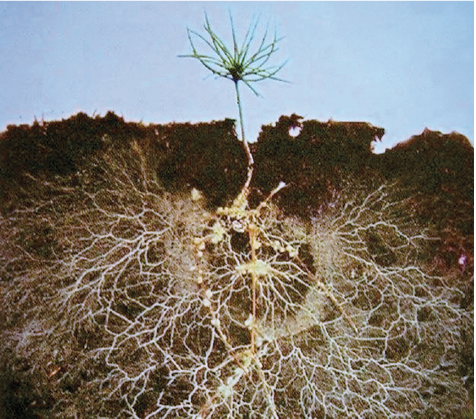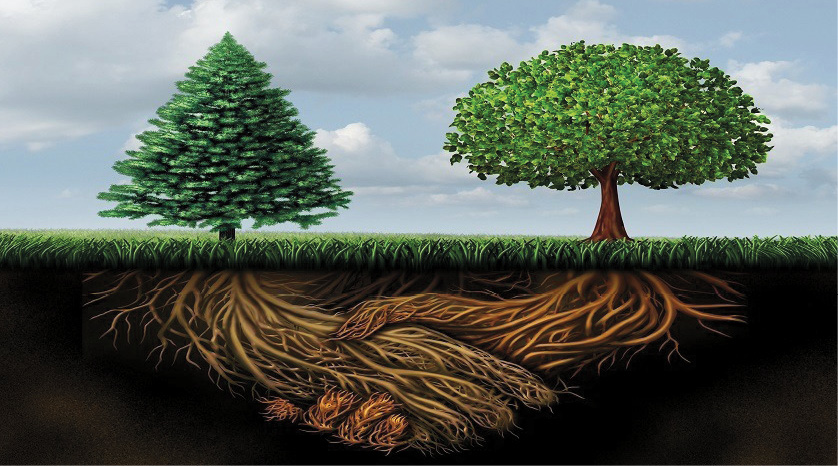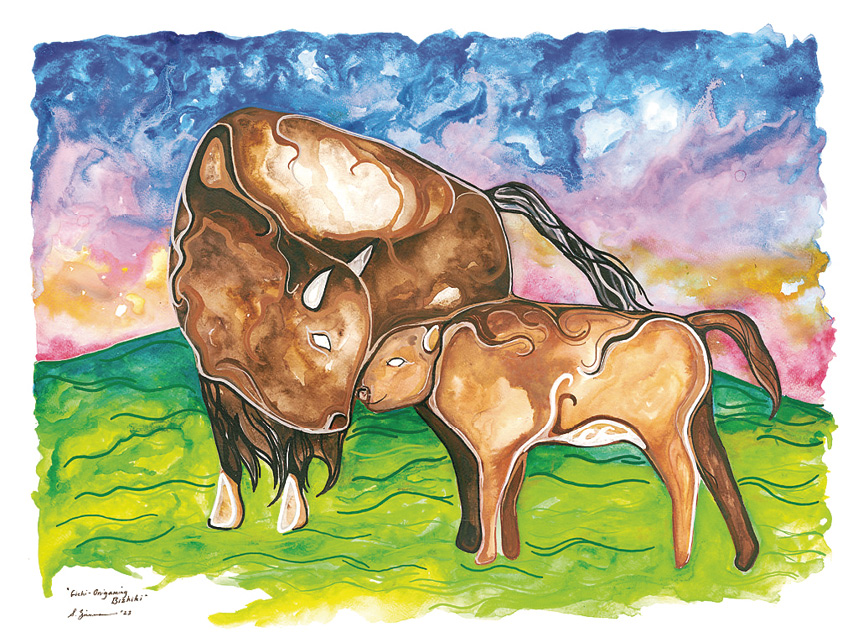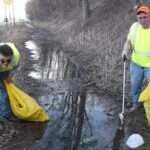My curiosity was recently piqued when I read that researchers reported that the total global length of something called mycorrhizal fungi in the top 3.9 inches (10 centimeters) of soil is 280 quadrillion miles (450 quadrillion kilometres)—that’s 15 zeros after the numbers 280 (450). An amazing breakdown figure is that one quadrillion is equal to a mind-boggling 1,000 trillion and—wait for it—one trillion is equal to 1,000 billion!
In 1997, Nature magazine called the underground mycorrhizal fungi network the “Wood Wide Net” akin to internet’s world wide web. It has also been called the “circulating system of the planet,” comparing it to the neural network in human brains. According to researchers, mycorrhizal fungi has been on Earth since about 1,300 million years ago.
However now in the 21st century, there are ‘hot spots’ in the world where the mycorrhizal fungi are under threat because of today’s agriculture, urbanization, pollution, water scarcity, and climate change.
So, what are mycorrhizal fungi? Well, if you have seen an uprooted tree with its mass of white thread-like structures attached to the tree roots, you’ve seen mycorrhizal fungi.
The mycorrhizal fungi network is an underground network found in plant communities, including forests, which joins plant roots through the fungi’s thin thread-like structures called “hyphae;” the mass of fungi filaments are called “mycelium.” Fungi are microscopic organism that wrap around or pierce the plant’s root and its hyphae reach out underground through soil in a massive network to other plants, including trees, to communicate, nurture, support, and transfer resources. Mycorrhiza fungi refers to the symbiotic (mutually beneficial) relationship between the plants and root fungi. It’s an underground fungi network that has been tagged as the “Wood Wide Web.”

As an example, a forest’s mycorrhizal fungi could be called nature’s underground highway on which photosynthesis products like sugars produced by the forest’s adult trees are transferred to nurture seedlings and trees; in return the fungi gives water and soil nutrients to the plants. More than 95 percent of all plant species have this symbiotic association with mycorrhizal fungi.
Actually, the majority of Earth’s mycorrhizal fungi connects all the trees and vegetation in a surrounding area of forest. In her book The Mother Tree, Dr. Suzanne Simard describes how mycorrhizal fungi is like a social network, allowing trees to communicate, share nutrients, protect plants from disease, and pull and store carbons from the atmosphere. The forest is like the internet’s world wide web, where instead of computers linked by wires of radio waves, the trees are connected by mycorrhizal fungi.
In her book, Dr. Simard notes that trees relay messages “back and forth through a cryptic underground fungal network.” According to Dr. Simard, the old trees were the mother trees—the hubs—connecting the forest via the mycorrhizal fungi network, like a neural network similar to the neurons in human brains. “Signals between trees could be as sharp as the electrochemical impulses between neurons, the brain chemistry that allow us to think and communicate,” she wrote. “Mycorrhizal network could have the signature of intelligence.” Other scientists have also begun to consider the consciousness of an ecosystem. Could the vast and complex Wood Wide Web be using a ‘language” we don’t understand?
In 2021, a world-wide project was launched by the Society for the Protection of Underground Networks (SPUN) to map the system of mycorrhizal fungi in soil around the Earth. In a One Earth article titled, “Mapping the Fungi Network that Lives Beneath the Soil,” by journalist Lindsey Jan Schuemann, she quotes billionaire Jeremy Grantham, the SPUN funder of the multi-million project, “Just below our feet lies an invaluable ally in mitigating climate change; vast hidden fungal networks. Billions of tonnes of carbon dioxide flow annually from plants to fungal networks. Yet these carbon sinks are poorly understood.”
Conservationist and SPUN project adviser Jane Goodall said, “This is an extremely important conservation project. An understanding of underground fungal networks is essential to our efforts to protect the soil, on which life depends before it is too late.”
SPUN with scientists from five countries—Canada, U.S., Netherlands, France, Germany, and the University of Manchester in the U.K.—will collect 10,000 samples from around the world from 10 ‘hot spots’ as identified through artificial intelligence (AI) technology. The 10 include Patagonia; Canadian tundra; Mexican plateau; South America high altitudes; Morocco; western Sahara; Negev desert in Israel; Kazakhstan steppes; Tibet’s grasslands and high plains; and Russian taiga.
Also quoted in the article was Mark Tercek, former CEO of Nature Conservancy, who said, “Fungal networks underpin life on Earth. If trees are the ‘lungs’ of the planet, fungal networks are the ‘circulatory systems.’ These networks are largely unexplored.”
Kind of awesome to think that when we walk on grass or in forests, we are walking on top of the underground mycorrhizal fungi.




